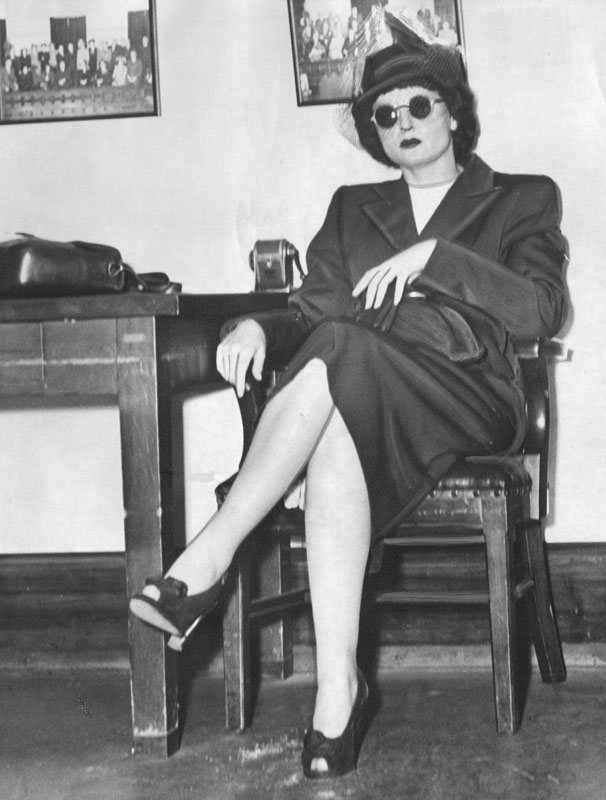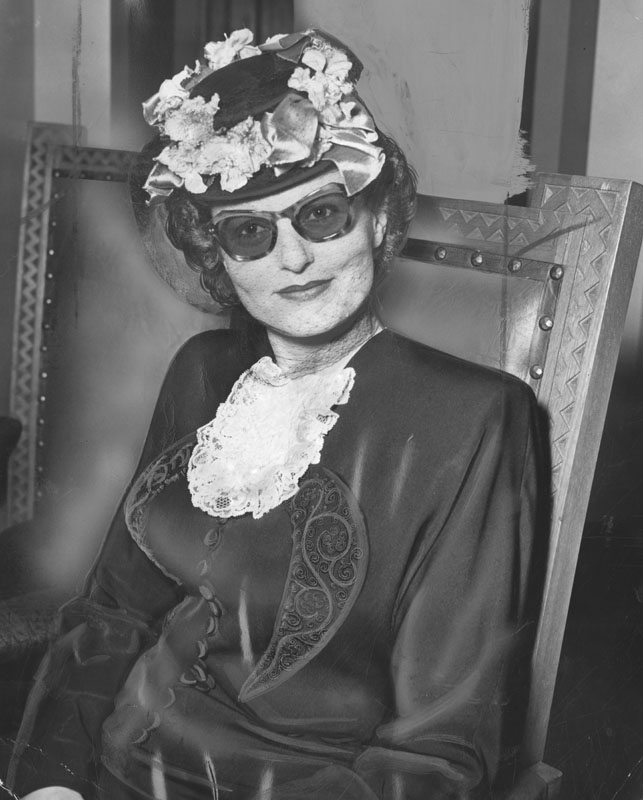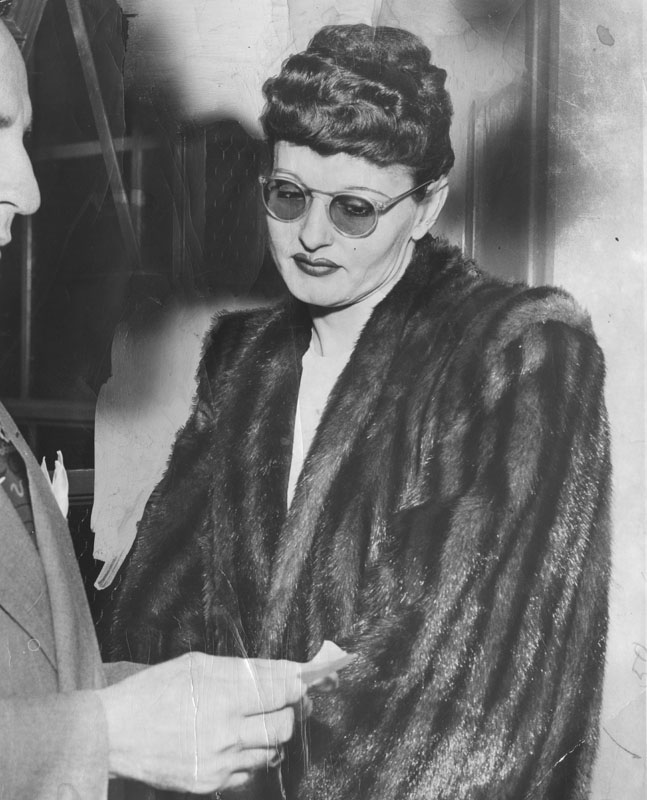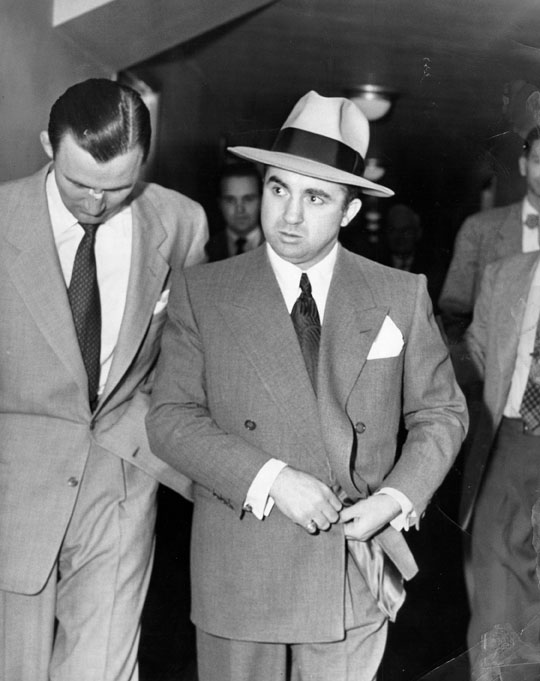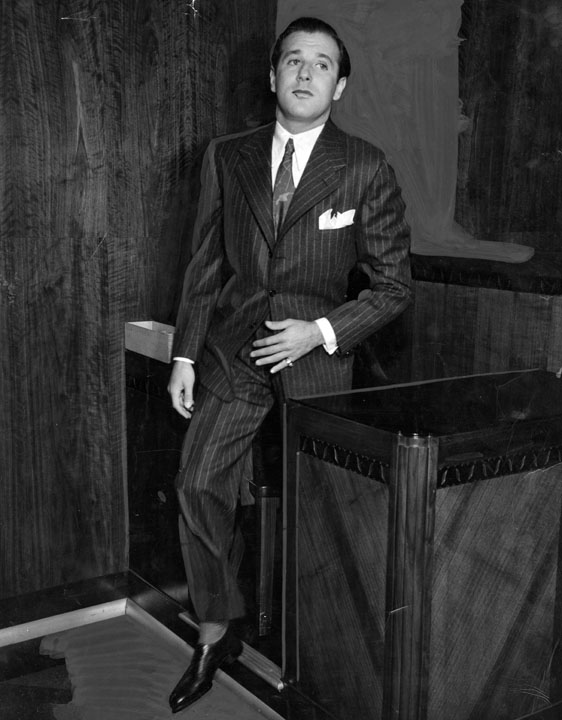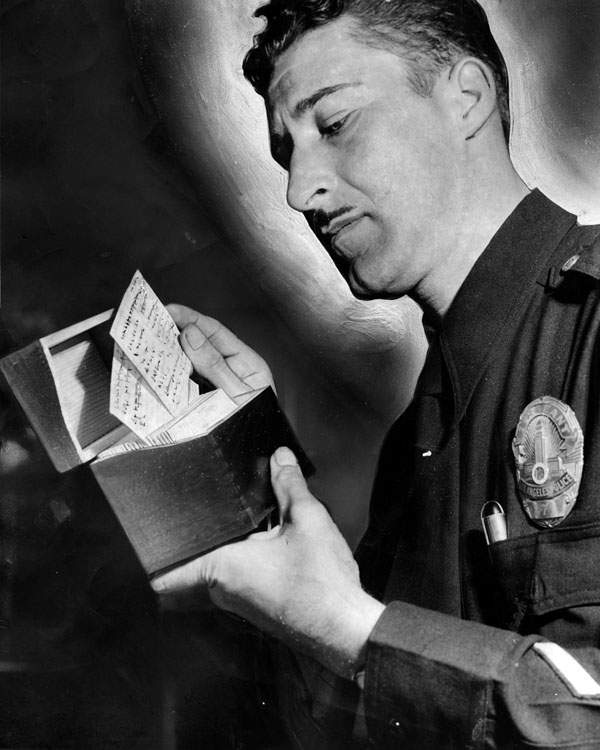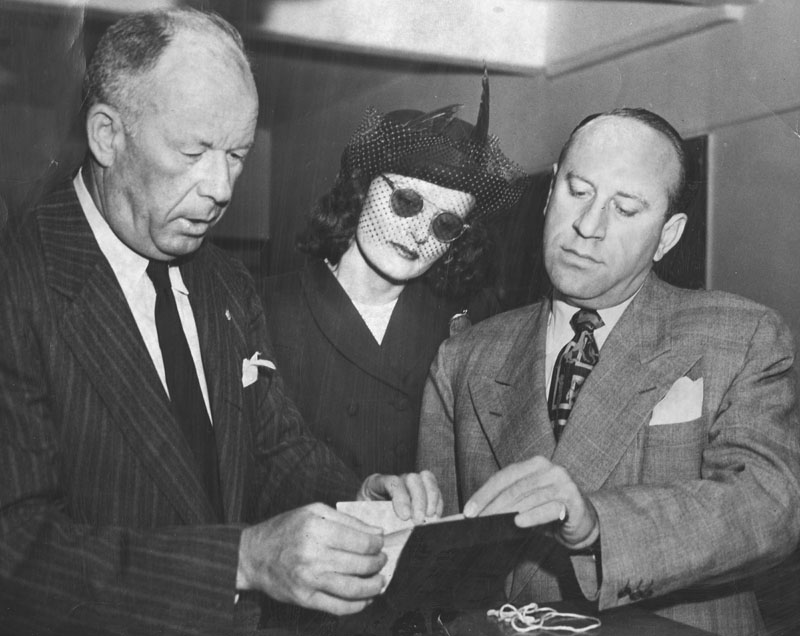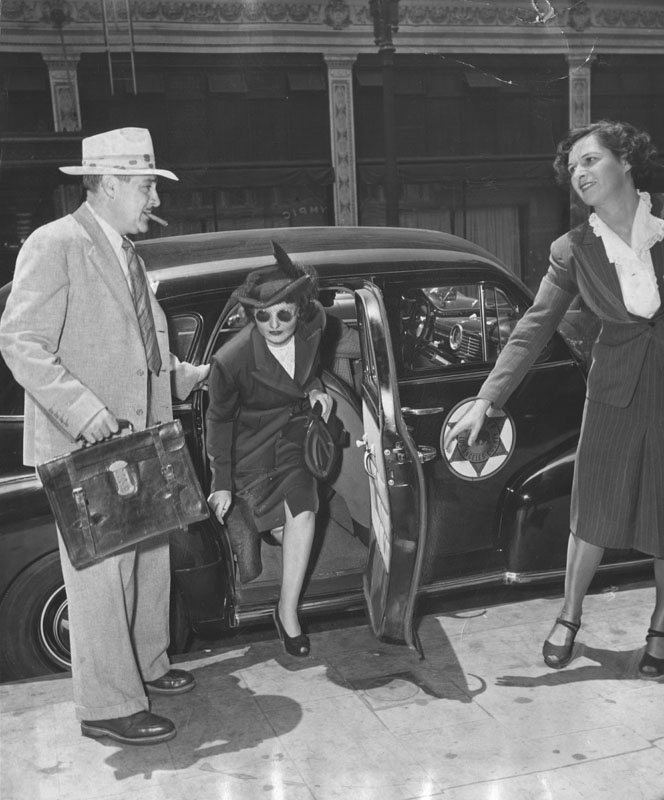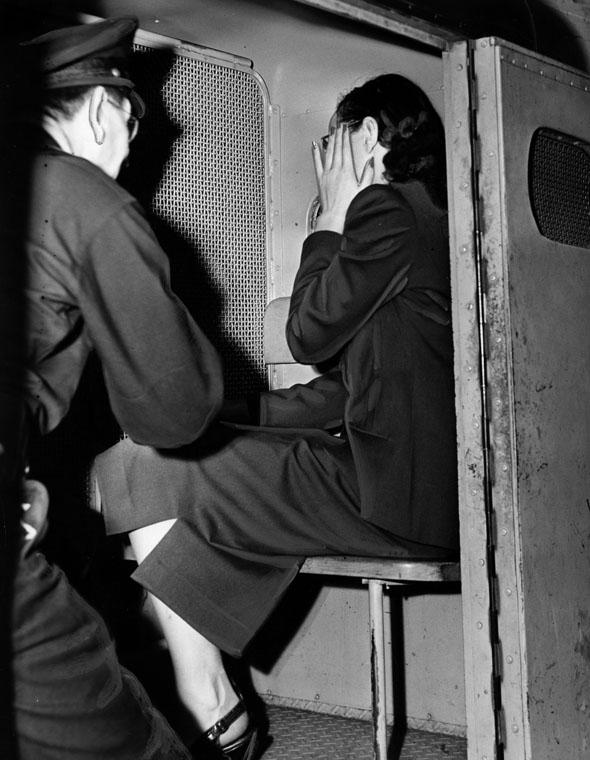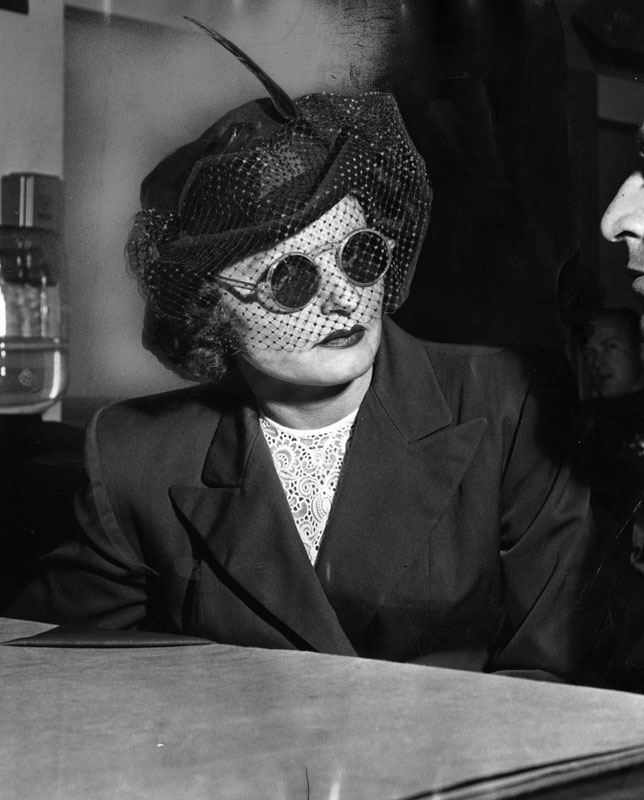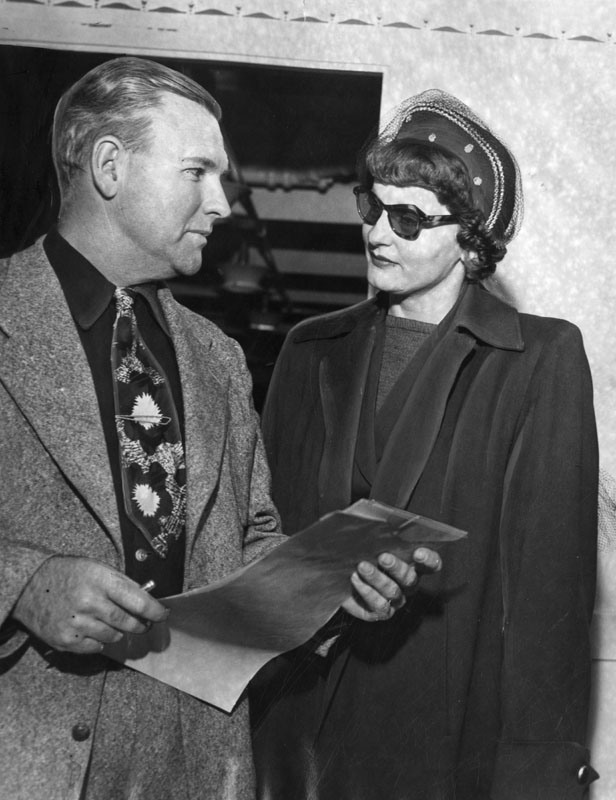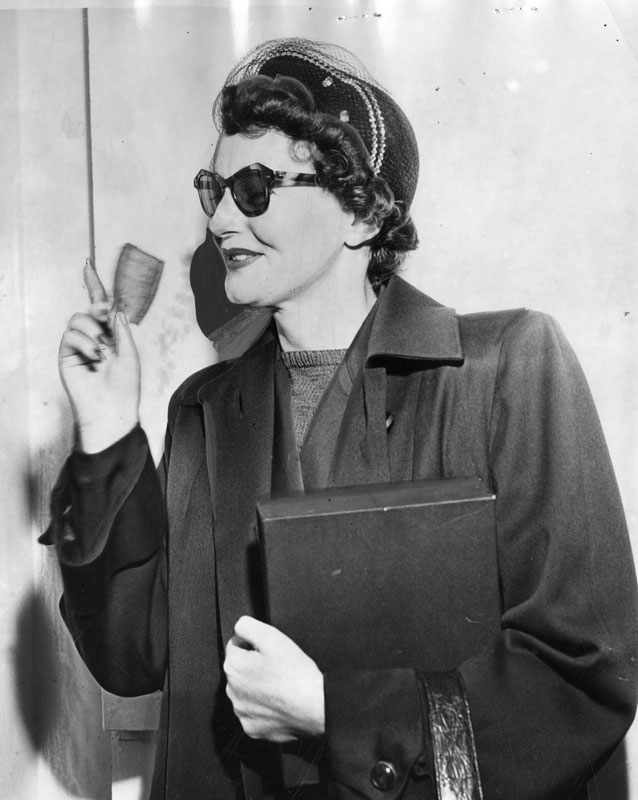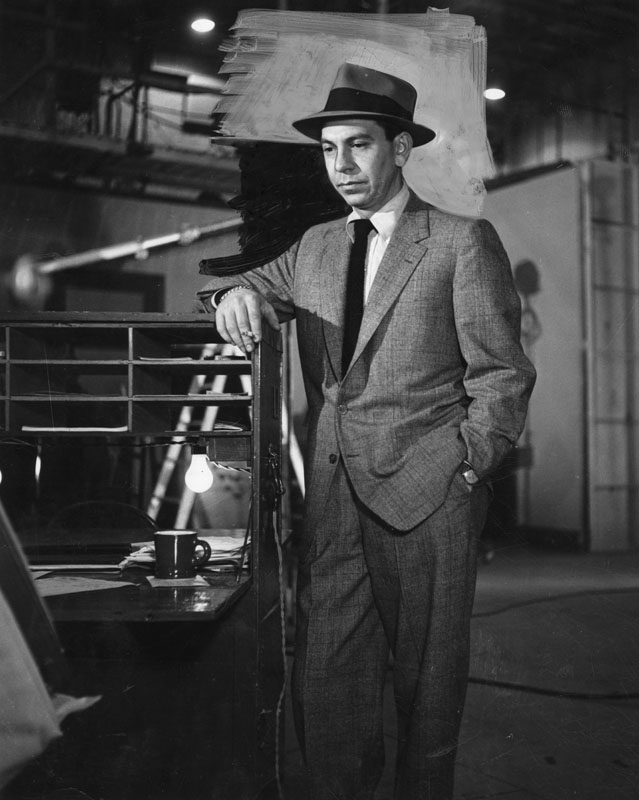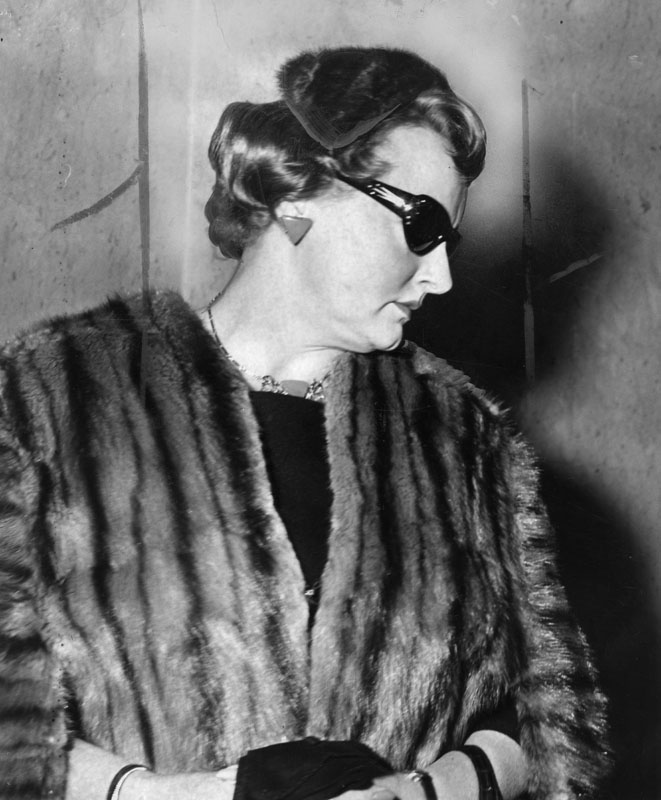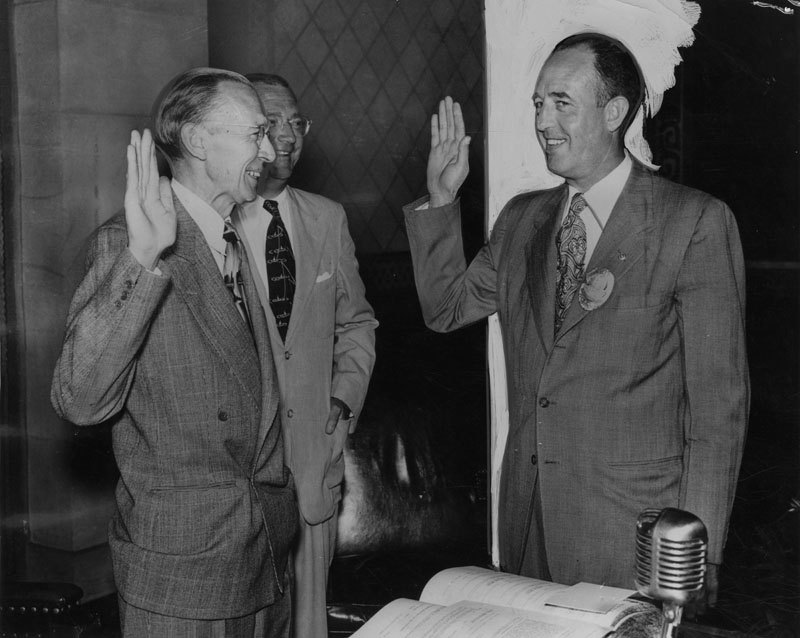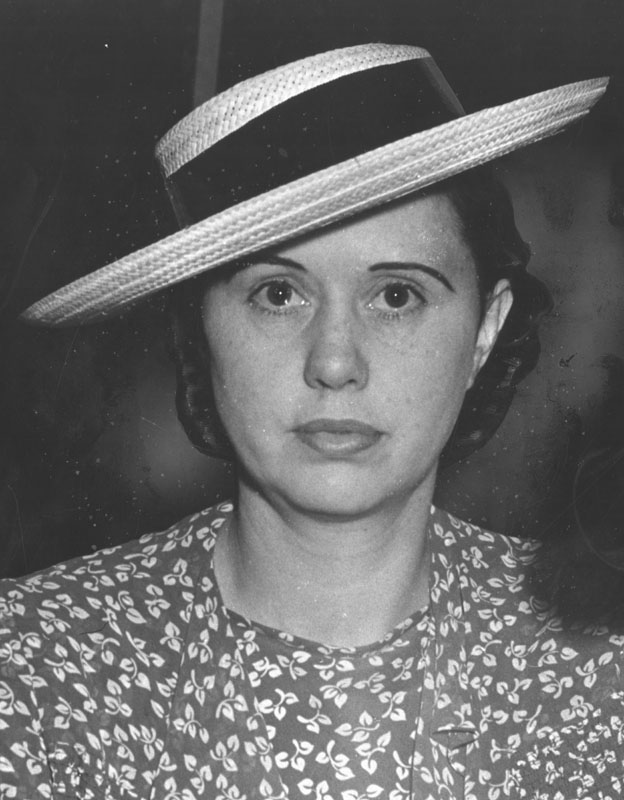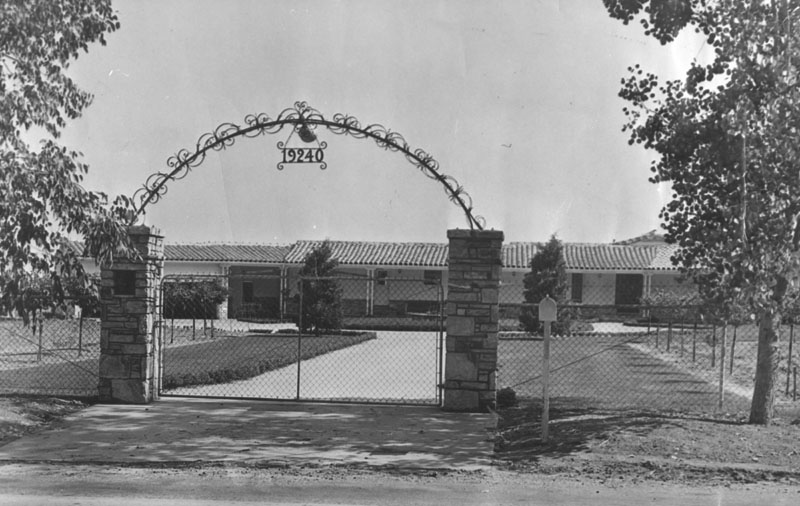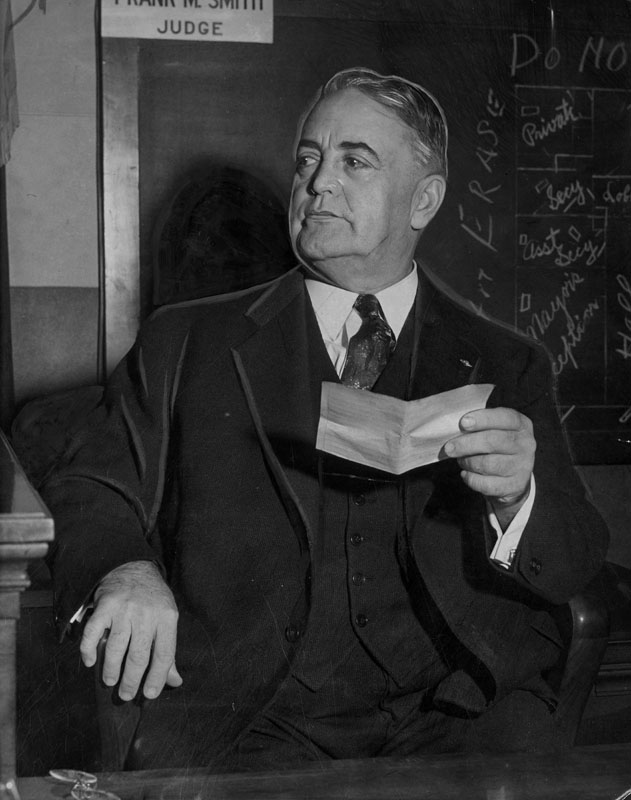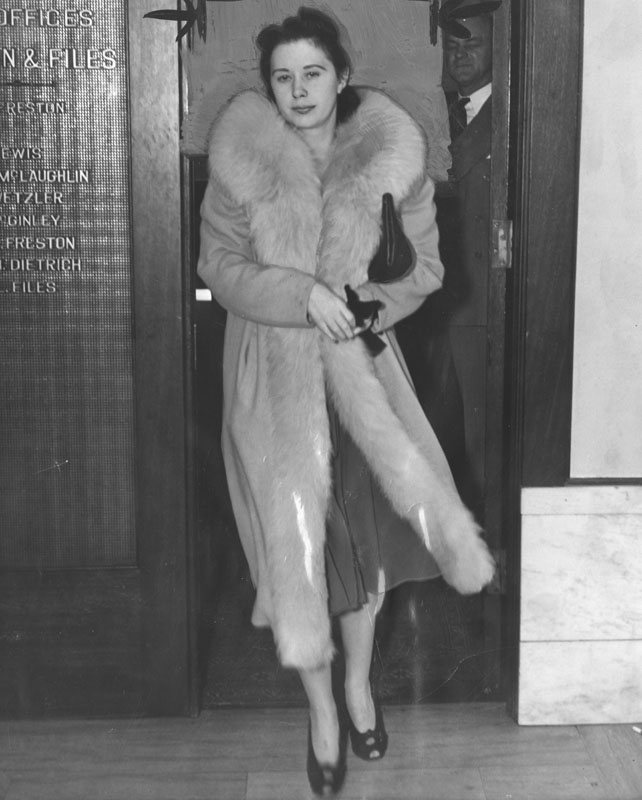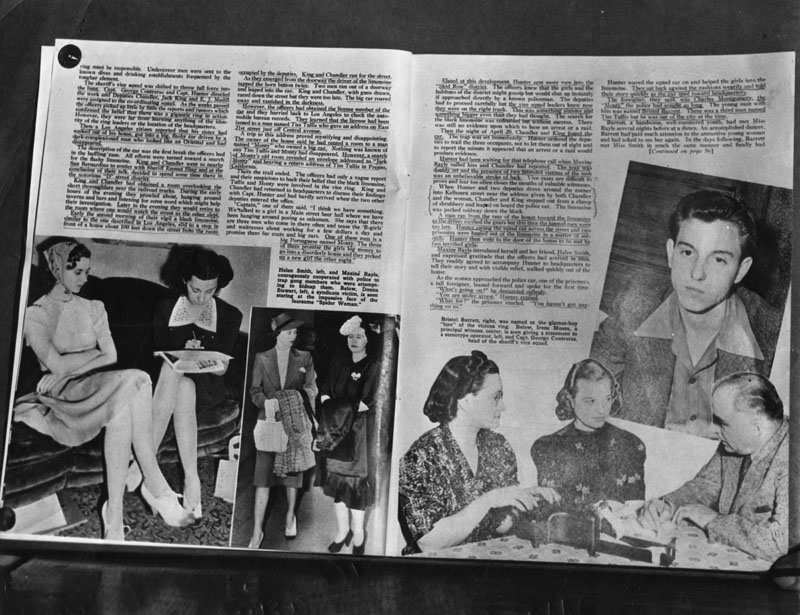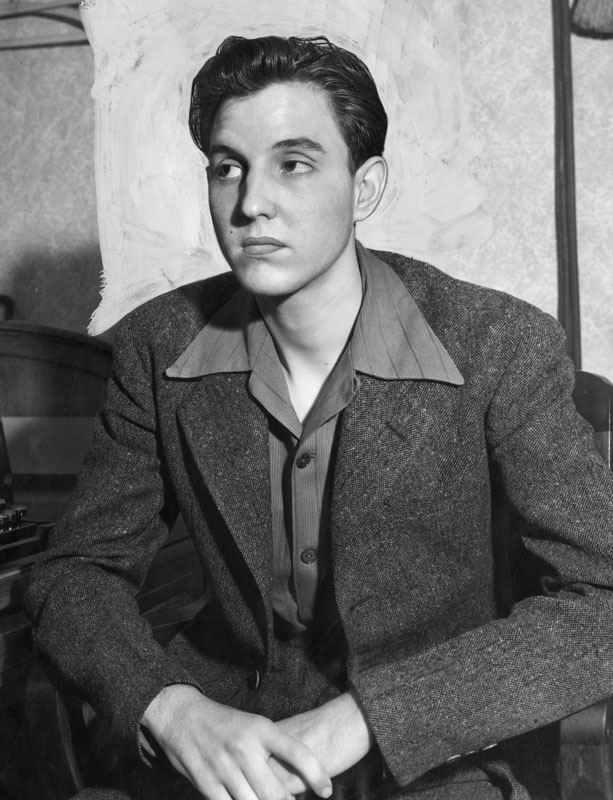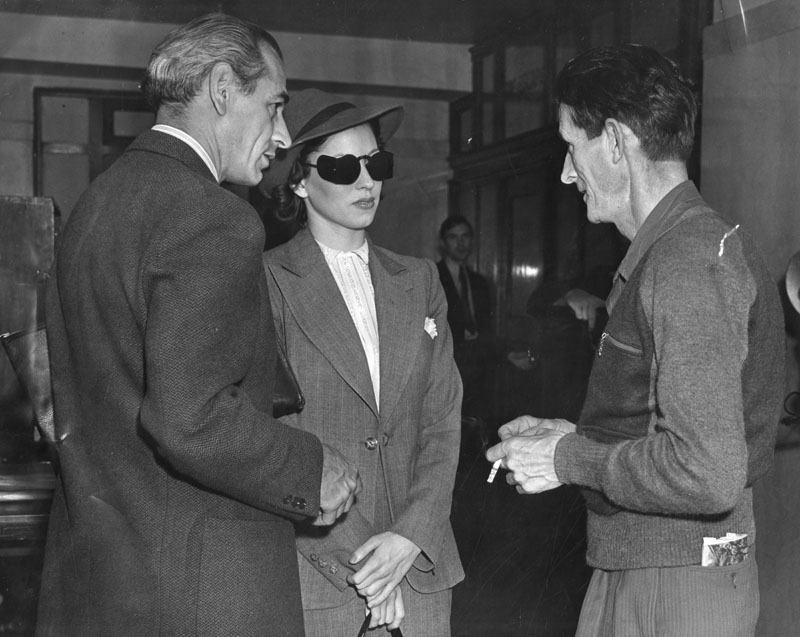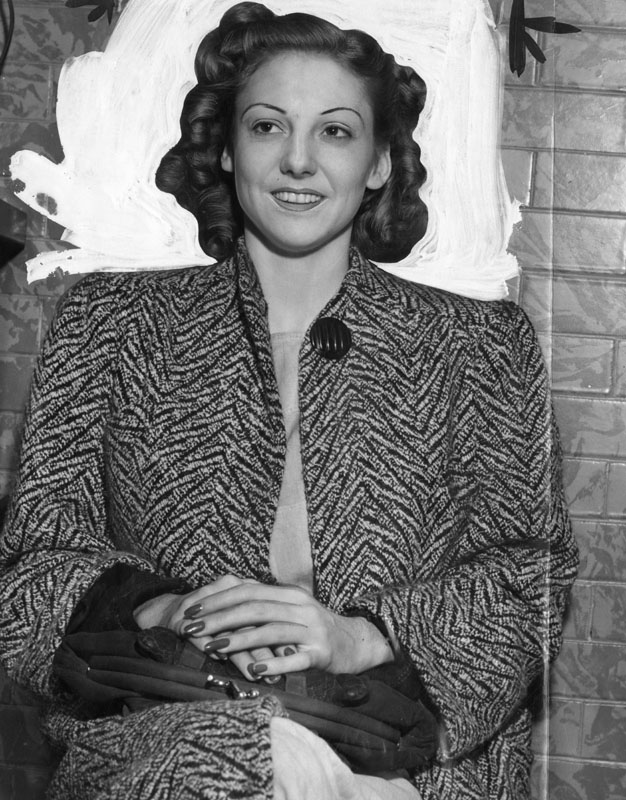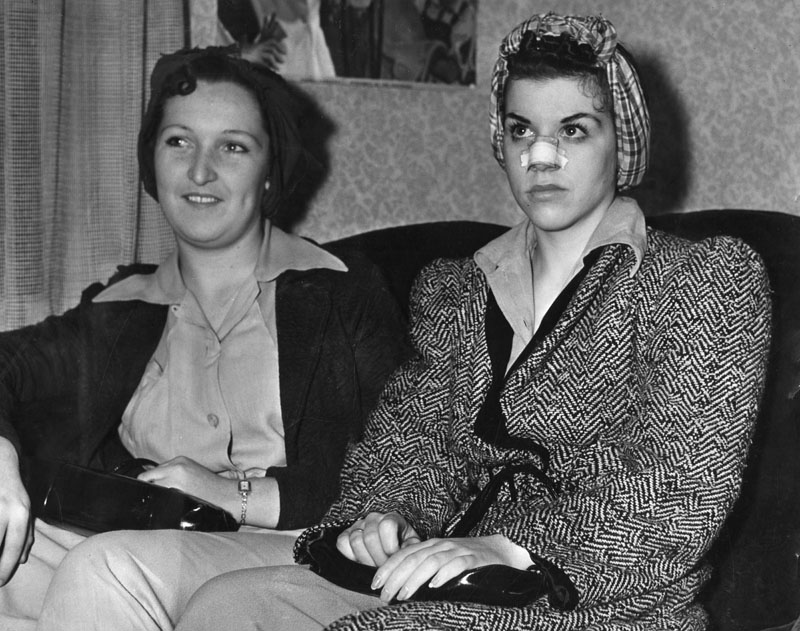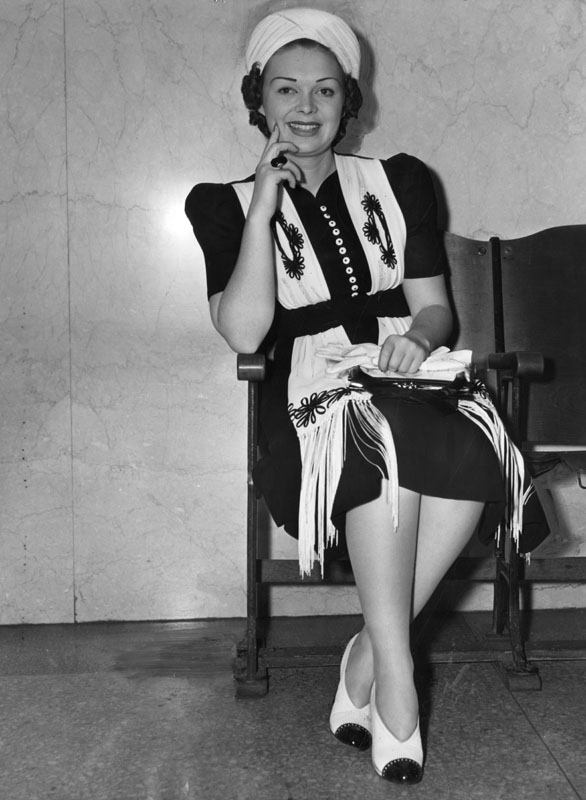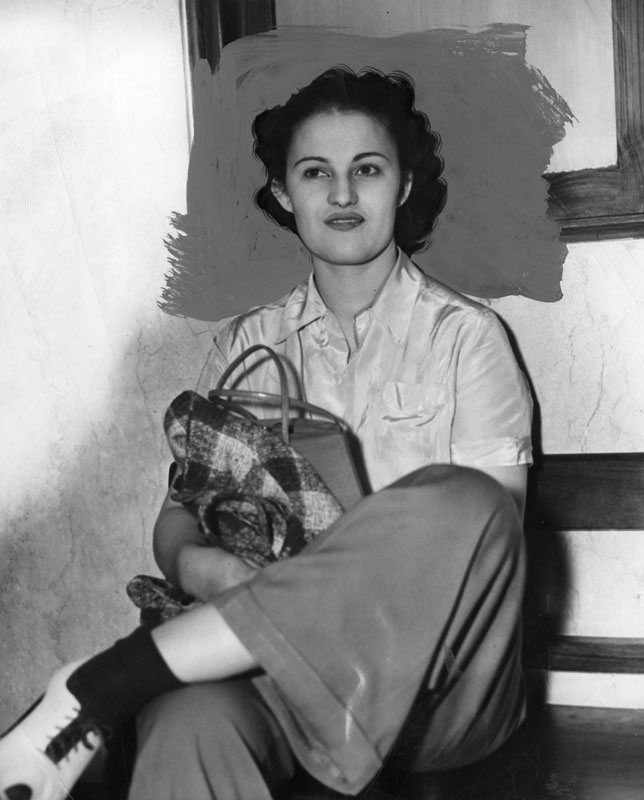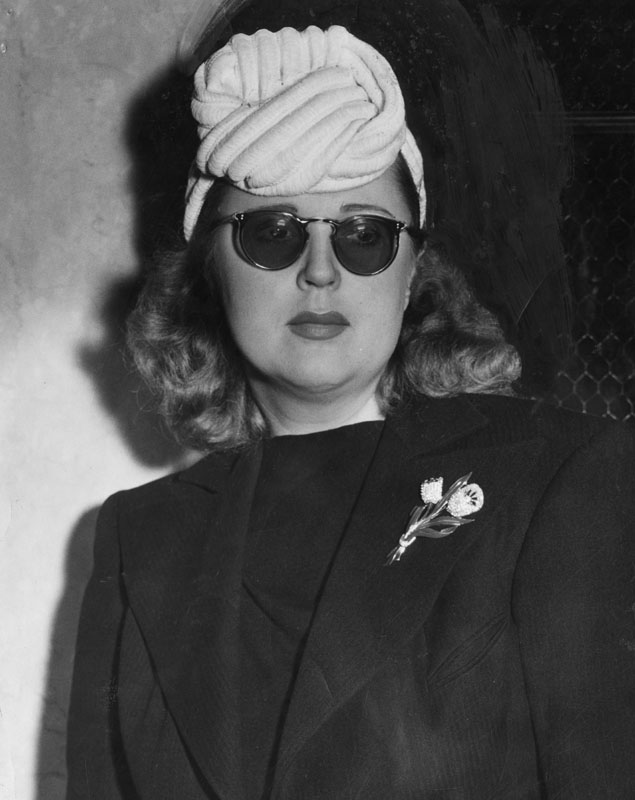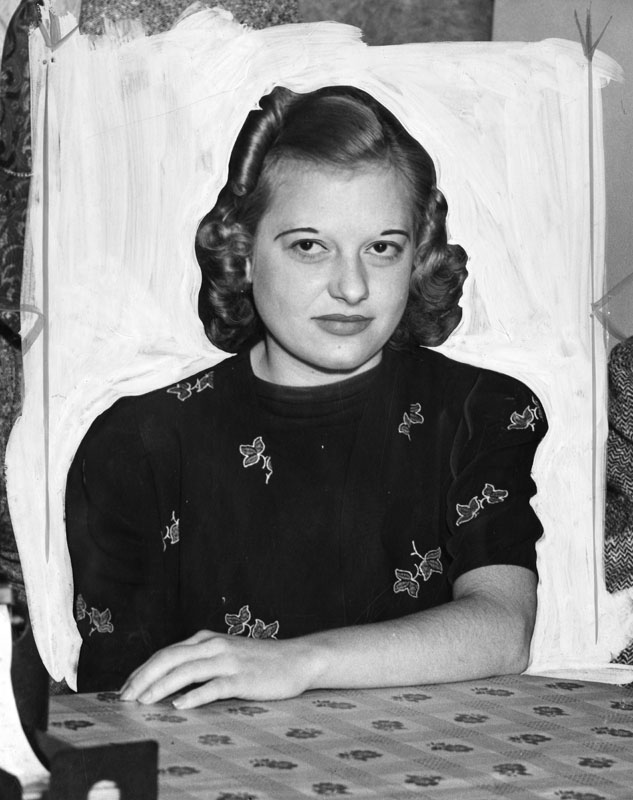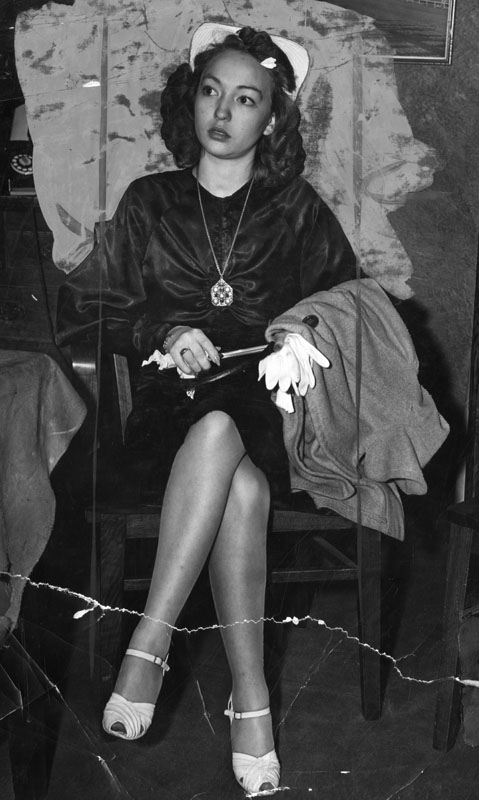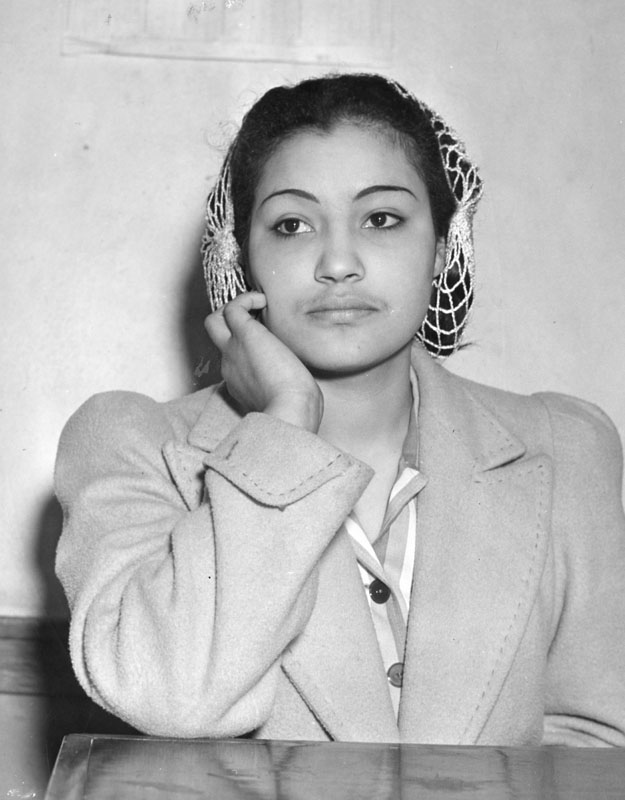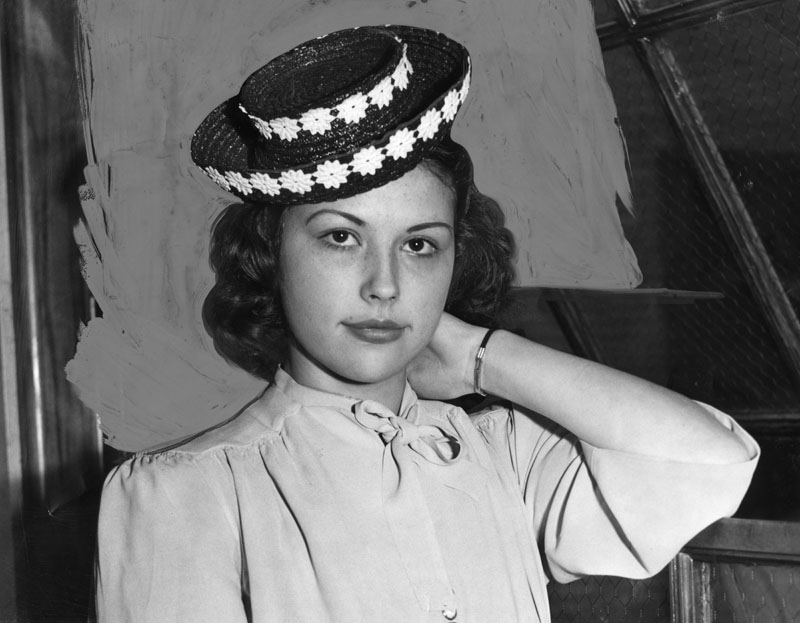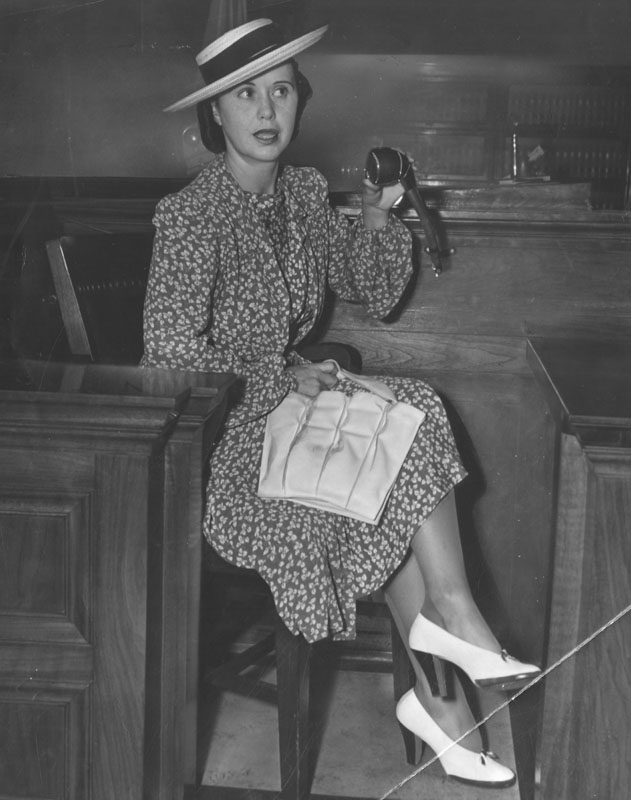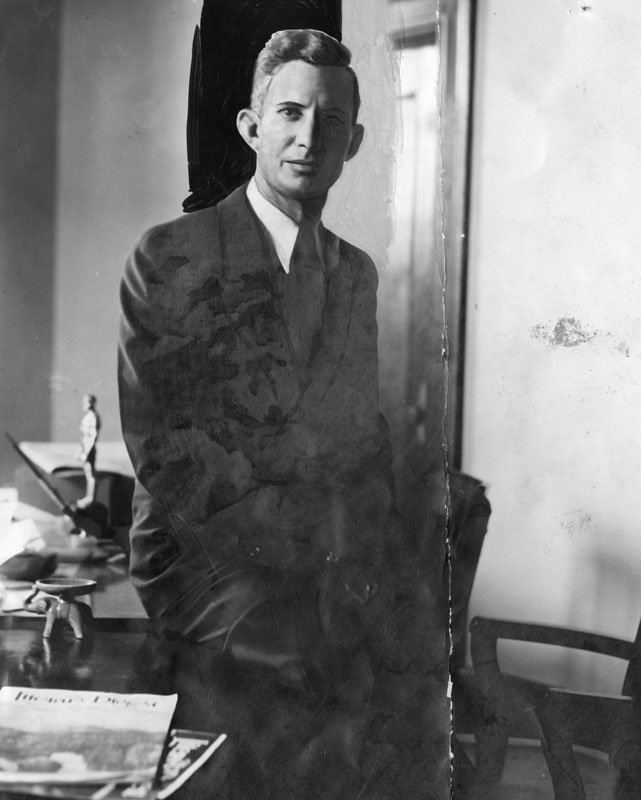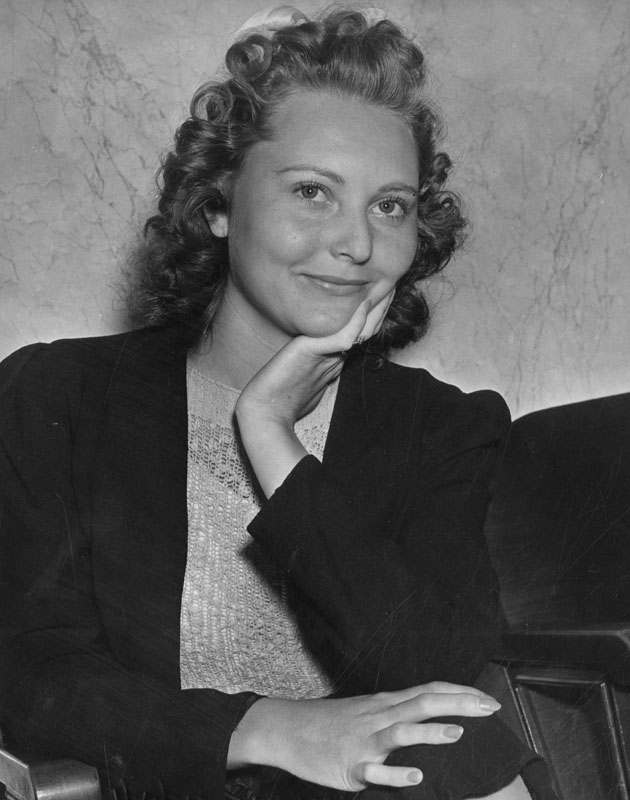After Ann Forst, the Black Widow, was sentenced to serve time for pandering, one of her protégés, Brenda Allen (born Marie Mitchell and going under a number of aliases including Brenda Allen Burns, Marie Brooks, Marie Cash, Brenda Burris, and Marie Balanque) wasted no time in setting up her own prostitution ring. Having learned a thing or two from her years as a streetwalker and then working for Ann Forst, Allen made a few changes. She concentrated on catering to high class clientele and screened her customers carefully. She paid her girls a decent wage and saw to it that they lived in comfort. (Many of Ann Forst’s former employees came to work for Allen.) A teetotaler with a slight Southern drawl, she was always well dressed and well-groomed, never appearing in public without perfectly manicured nails and dark glasses. She treated everyone with unfailing politeness. By 1948, Allen was taking out display ads in Hollywood trade papers for her “escort service,” which featured over a hundred girls.
“Allen was Hollywood’s most prosperous madam, in part because she was so cautious. Rather than take on the risks that came with running a ‘bawdy house,’ Allen relied on a telephone exchange service to communicate with clients who were vetted with the utmost care. She prided herself on serving the crème de la crème of Los Angeles. By 1948, she had 114 ‘pleasure girls’ in her harem.”
John Buntin, Author of L.A. Noir: The Struggle for the Soul of America’s Most Seductive City
Allen’s professional manner of dress included tailored skirts and dark glasses. (Allen stated in an interview years later that she wore dark glasses so that she was unrecognizable to her family back East. She wanted to spare them any embarrassment her actions [and chosen profession] might cause.)
Herald Examiner Collection, photo dated July 16, 1949.
Allen sports a suit cut from imported black gabardine and a hat adorned
with primroses. As always, she wears dark glasses.
Herald Examiner Collection, photo dated October 31, 1949.
Like Forst, Allen protected her business from shutdown and other problems by paying off members of the Los Angeles Police Department. (She loved to brag that she had been arrested 18 times, but never served a day in jail) Unlike Forst, her professional protection had a personal side to it. Allen became romantically involved with Sergeant Elmer V. Jackson of the LAPD’s vice squad, who became her lover and business partner. For protection from raids and other legal actions, Allen paid Jackson $50 a week (which equals $500 a week in 2017) for each woman she employed. She could easily afford to do this, as her team was bringing in between $4,500 to $4,700 per day (the equivalent of $80,000 today). Allen took a 50% cut from the profits and 30% went to paying off cops, doctors, lawyers, judges, and bail bondsmen who provided protection and other favors. The rest of the income from the ring was divided amongst the girls. (Even with all this overhead, her girls were still paid well by standards of the day.)
Brenda Allen attends to legal business wearing a fur coat, one of many
luxuries affordable to her during her heyday.
Herald Examiner Collection, photo dated May 12, 1948.
Allen also had protection of a less legal sort. Whereas Ann Forst had connections to Jack Dragna and Johnny Roselli, Allen’s mob connections were to Mickey Cohen and Bugsy Siegel. Ironically, it was because of Dragna and Roselli’s decision to divvy up vice operations in Los Angeles that Allen wound up under the thumb of two of the most ruthless members of organized crime on the West Coast. If a call girl or a client made a wrong move, they could wind up disfigured or dead. Allen was well aware that she could suffer the same fate. (Interestingly enough, Mickey Cohen claimed during a 1949 trial that LAPD Sergeant Elmer V. Jackson [Allen’s business partner and lover] and Lieutenant Rudy Wellpot were constantly extorting money from him.)
Mickey Cohen and bodyguards.
Herald Examiner Collection, photo dated February 22, 1951.
Bugsy Siegel at one of his many court dates.
Herald Examiner Collection, photo dated May 26, 1941.
Brenda Allen’s illegal empire became the subject of scrutiny due to an unexpected random occurrence – a crime in which she was the intended victim. On the evening of February 21, 1947, Allen and her lover Jackson were sitting in Jackson’s car in front of Allen’s apartment at 9th and Fedora streets. Suddenly, Roy “Peewee” Lewis stuck a gun through an open window of the car and demanded money. Jackson pretended to reach for his wallet but retrieved a pistol instead. He then shot and killed Lewis. Although Jackson had protected Allen and himself, he had exposed their relationship to others in the LAPD. Jackson told responding officers that Allen was a police stenographer, but someone in the press who covered the story realized that Jackson’s sweetheart was no such thing. LAPD officials became suspicious and placed wiretaps on Allen’s phones and surveillance on her.
A raid was conducted on a house at 8436 Harold Way (just above Sunset Boulevard); it was one of the sites used by Allen’s girls. Police confiscated a box of index cards on which were recorded names, addresses, phone numbers, and notes regarding the sexual predilections of over 200 “notables of the film colony.” Brenda Allen was arrested and charged with pandering. The Los Angeles Times’ headline of May 5, 1948, read Names Found in Vice Raid Set Hollywood Agog.
Vice Sergeant C. W. Bates inspects a file of index cards confiscated during
a raid on a house of prostitution managed by Brenda Allen.
Herald Examiner Collection, photo dated May 8, 1948.
It is interesting to note that during the trial in which the box of cards was an exhibit, Judge Joseph Call ordered that the box be sealed because “In the box are names of dignitaries of the screen and radio and executives of responsible positions in many great industries. Publication of their names would be ruinous to their careers and cause them great public disgrace.” Whereas her customers were spared further scrutiny, Brenda Allen was not.
While law enforcement officials wanted to charge Allen with pandering, they simply could not get anyone to admit to any coercion or intimidation on the part of the Vice Queen. Whereas Ann Forst’ girls had gladly given testimony that put their Forst behind bars, not one of Allen’s girls spoke out against her. (Allen treated her girls and other staff members well, so they protected her.) The LAPD wiretapped Allen’s phone and now instructed Audre Davis, a female police officer, to call and pretend to be a woman interested in becoming a prostitute. This was an attempt to set Allen up for a charge of pandering. Davis gave testimony under oath to the Grand Jury that Allen solicited her to exchange sex for money. Allen denied the charge. The judge found Allen guilty and sentenced her to five years’ imprisonment.
Brenda Allen learns that she has been found guilty of pandering.
Herald Examiner Collection, photo taken August 11, 1948.
At her trial, Allen testified about the payoffs she made to police for protection, exposing her lover, Sergeant Jackson, and Hollywood vice squad sergeant Charles Stoker as the main recipients of the money. She not only made claims against members of the LAPD, but provided financial records to prove her claims. (Interesting note: Sergeant Jackson did not speak against or offer incriminating advice against Allen. He apparently loved her very much.)
Brenda Allen is escorted by police to the sites where she stored records of payments
made to police officials for protection from raids and other legal action.
Herald Examiner Collection, photo dated June 16, 1949.
Allen is taken to the jail in Lincoln Heights to begin her sentence for pandering.
Herald Examiner Collection, photo dated August 11, 1948.
Months after the trial, policewoman Davis recanted her testimony, admitting she lied under oath. The account she gave in court was a complete fabrication designed to entrap Brenda Allen. In May of 1949, Allen appeared in court with an appeal to have her sentence reduced.
Brenda Allen waits for policewoman Audre Davis to appear at hearing arranged
by Judge William McKay. Davis never showed up in court.
Herald Examiner Collection, photo dated July 9, 1949.
Less than four months later, on Friday, September 2, 1949, Allen was released from jail on order of the California Supreme Court. It was noted that she had been a model prisoner. She returned to incarceration, however, in 1951 to serve the remainder of an eight-month sentence.
Brenda Allen returns to prison, escorted by a sheriff’s detective.
Herald Examiner Collection, photo dated March 5, 1951.
Brenda Allen finally became a free woman in the summer of 1951.
Brenda Allen is freed from incarceration.
Herald Examiner Collection, photo dated July 11, 1951.
On May 5, 1949, gangster Mickey Cohen was also in court (on a legal action unrelated to Brenda Allen). He casually mentioned that he possessed taped recordings of telephone conversations between the Vice Queen and Sergeant Jackson of the LAPD Vice Department. These calls had came to and from Jackson’s office at LAPD headquarters. This pointed to more people knowing about Allen’s payments than just Jackson and Stoker. Before the summer was over, Police Chief Clemence Brooks Horrall (Chief since 1941) resigned under threat of a grand jury investigation for investigation of perjury on his part related to the Brenda Allen scandal. (Ironically, Horrall had become chief when the previous chief, Clarence Hohmann, took a demotion to deputy chief after he became involved in a police corruption trial.) Assistant Chief Joe Reed also resigned. (Note: Assistant Chief Reed was instrumental in the creation of a radio show about the LAPD titled Dragnet, with Jack Webb starring in the program.)
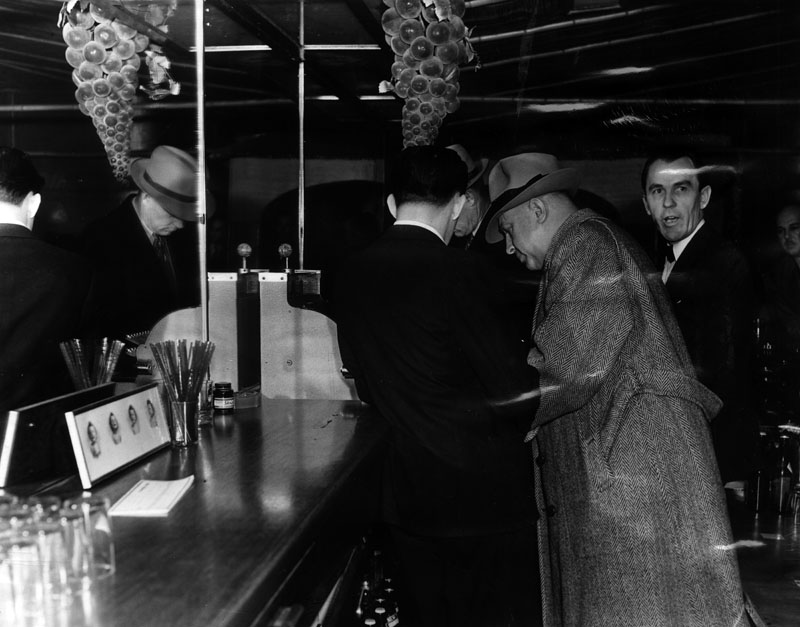 Police Chief Horrall is seen at a nightclub raid; he is the man in the middle wearing a hat.
Police Chief Horrall is seen at a nightclub raid; he is the man in the middle wearing a hat.
Herald Examiner Collection, photo dated January 29, 1941.
Actor Jack Webb on the set of Dragnet, a radio program (later to become an iconic television series).
Herald Examiner Collection, photo taken in 1953.
Brenda Allen served less than one year in prison. LAPD Sergeant Elmer Jackson was demoted but managed to stay on the force until his retirement in the 1960s. Vice Squad Sergeant Charles Stoker was fired from the LAPD when he was charged with burglary (a charge he claimed was trumped up and which resulted in a hung jury at a 1949 trial).
Allen’s last appearance in the newspapers was in 1961 when, amidst accusations of domestic violence, she divorced her husband, a former Navy pilot named Robert H. Cash. Cash had married Allen (who was going by the name of Marie Mitchell and working as a hairdresser) and knew nothing of her background or history. Upon finding out that she was the notorious Vice Queen Bee (another nickname given her), he promptly sought to end the marriage.
Brenda Allen goes to court to get a divorce.
Herald Examiner Collection, photo dated March 17, 1961.
She was never in the press or public eye again.
One upshot of the Allen raid and trial was that city officials finally focused on ending the systemic corruption prevalent in the Los Angeles Police Department. Police Chief Horrall was replaced by a retired Marine named William A. Worton, who acted as interim chief until 1950, when William H. Parker became Chief of Police. Parker, who served until he died of a heart attack in 1966, made ending corruption and raising the standards of professionalism in the LAPD a top priority. He was known as Los Angeles’ greatest and most controversial chief of police and had the LAPD headquarters named after him.
Interim Police Chief William A. Worton (on the right) meets with
City Council candidate James C. Corman.
Valley Times Collection, photo dated May 24, 1957.
William Parker (on the right) is sworn as Police Chief of the Los Angeles Public Department.
Herald-Examiner Collection, photo dated August 9, 1950.
Brenda Allen died in obscurity, place and year unknown.

